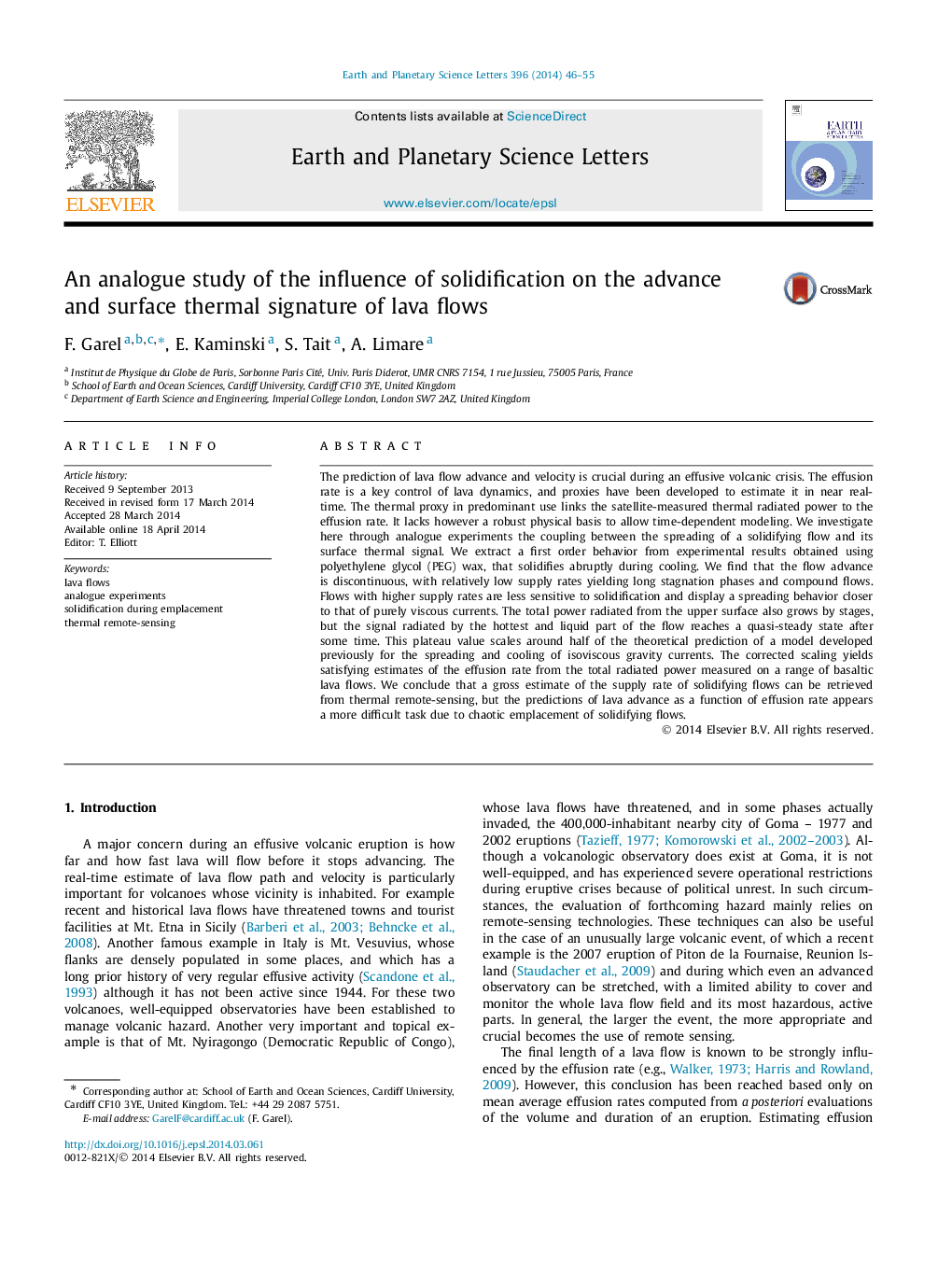| کد مقاله | کد نشریه | سال انتشار | مقاله انگلیسی | نسخه تمام متن |
|---|---|---|---|---|
| 6429529 | 1634760 | 2014 | 10 صفحه PDF | دانلود رایگان |
- The flow advance and cooling of a solidifying material is studied experimentally.
- Despite a constant supply rate, the emplacement is discontinuous and non-periodic.
- The power radiated by the hottest region becomes stationary after a transient time.
- A theoretical isoviscous scaling is able to match experimental and lava flows data.
- Thermal remote-sensing of lava flows should consider both flow areas and radiances.
The prediction of lava flow advance and velocity is crucial during an effusive volcanic crisis. The effusion rate is a key control of lava dynamics, and proxies have been developed to estimate it in near real-time. The thermal proxy in predominant use links the satellite-measured thermal radiated power to the effusion rate. It lacks however a robust physical basis to allow time-dependent modeling. We investigate here through analogue experiments the coupling between the spreading of a solidifying flow and its surface thermal signal. We extract a first order behavior from experimental results obtained using polyethylene glycol (PEG) wax, that solidifies abruptly during cooling. We find that the flow advance is discontinuous, with relatively low supply rates yielding long stagnation phases and compound flows. Flows with higher supply rates are less sensitive to solidification and display a spreading behavior closer to that of purely viscous currents. The total power radiated from the upper surface also grows by stages, but the signal radiated by the hottest and liquid part of the flow reaches a quasi-steady state after some time. This plateau value scales around half of the theoretical prediction of a model developed previously for the spreading and cooling of isoviscous gravity currents. The corrected scaling yields satisfying estimates of the effusion rate from the total radiated power measured on a range of basaltic lava flows. We conclude that a gross estimate of the supply rate of solidifying flows can be retrieved from thermal remote-sensing, but the predictions of lava advance as a function of effusion rate appears a more difficult task due to chaotic emplacement of solidifying flows.
140
Journal: Earth and Planetary Science Letters - Volume 396, 15 June 2014, Pages 46-55
